Whenever there is an aviation incident, one of the most crucial tasks of the accident investigation team is to locate the “black box” on the aircraft.
This small box, approximately half a meter long, holds the last recorded information before the aircraft encountered trouble and serves as the most direct evidence to determine the cause of the accident.
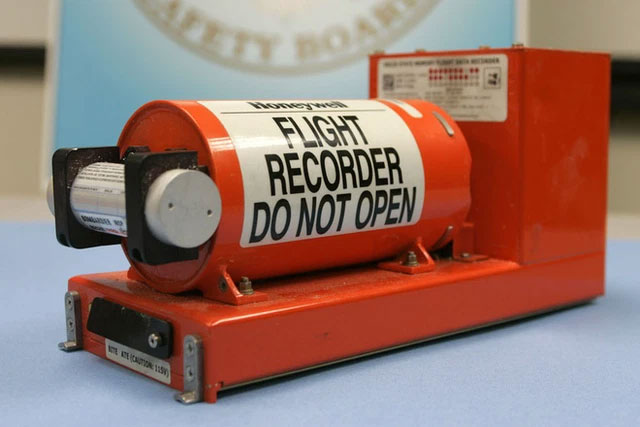
“Black box” on the aircraft.
The black box consists of two sets of devices. One is the Flight Data Recorder (FDR), which can record the aircraft’s flight parameters in real-time. This includes critical data such as speed, altitude, heading, thrust, and acceleration, with a typical recording duration of about 25 hours. The other device is the Cockpit Voice Recorder (CVR). After the flight commences, four audio channels on the device begin recording conversations between the pilot and air traffic controller, dialogue between the pilot and co-pilot, as well as communications between the crew and passengers. It also captures radio transmissions and various sounds in the cockpit (engine noise, alarms, etc.). The recording duration is around 2 hours, and once full, it automatically rewinds and starts over.
In an accident, where every second of data is valuable, the search for the black box is extremely urgent. Moreover, the black box is not indestructible; it can be damaged by fire, explosions, or even rendered inoperable, as was the case with the black box of Malaysia Airlines Flight MH370.
Therefore, a question arises: Why is it not possible to synchronize black box data to the cloud in real-time so that investigators can quickly access it whenever needed?
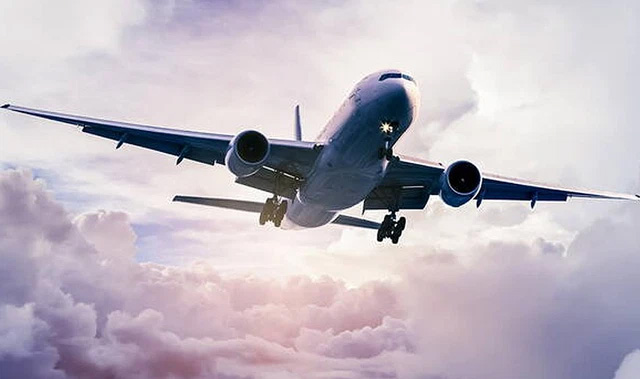
Aviation technology has advanced significantly since the time the black box was created, yet the black box must remain as minimal as possible.
Why can’t black box data be synchronized in real-time?
The answer lies in the fact that black box data is challenging to synchronize with cloud computing platforms in real-time.
Compared to the time when the black box was invented, today’s communication technology has made significant strides, with Wi-Fi now available on airplanes. You can even view the speed and altitude data of commercial aircraft from the Internet, and this information is shared in real-time. However, making all data from the black box capable of synchronizing to the “cloud” is not that straightforward.
The primary function of the black box is to store and protect data, while its other functional aspects are quite limited, making it unsuitable for data synchronization.
Storage technology has improved significantly over the past few decades. Earlier black boxes were equipped with magnetic disks, whereas most modern aircraft now use Solid-State Flight Data Recorders (SSFDR).
To withstand strong physical shocks, black boxes cannot use large-capacity storage devices like conventional hard drives or SD cards. In fact, the data storage capacity of a black box is less than 1% of that of a typical laptop. It usually has a storage capacity of only 1 GB to 4 GB to hold all system files and cannot perform tasks like computation.

We cannot add hard drives or SD cards to expand the memory of the black box.
Secondly, regarding hardware, the weight, size, and power consumption of the black box are strictly limited.
The design of the black box requires it to function for a long time with limited power supply. The black box is equipped with an independent power source to ensure the device can continue operating during abnormal aircraft incidents. Once the black box falls into water, its power supply will maintain an underwater locator beacon for at least 30 days. For this reason, the power consumption of the devices inside the black box needs to be minimized, and installing data transmission modules would consume too much power.
Finally, synchronizing important data to the “cloud” requires a very stable network environment. Meanwhile, the current network systems on aircraft cannot achieve this, which is likely the most significant reason.
If you have ever used Wi-Fi on an airplane, you will notice that it is quite slow and the connection is unstable. Wi-Fi on airplanes primarily relies on two main technologies to provide Internet access: ground-based base station networks and satellite networks in the sky. The position of satellites, terrain, weather conditions, and other factors will affect network stability. Meanwhile, the black box needs to ensure continuous and complete data recording. This is why Wi-Fi on airplanes, as well as radio systems, radar, satellite phones, and other systems, cannot fulfill this requirement.
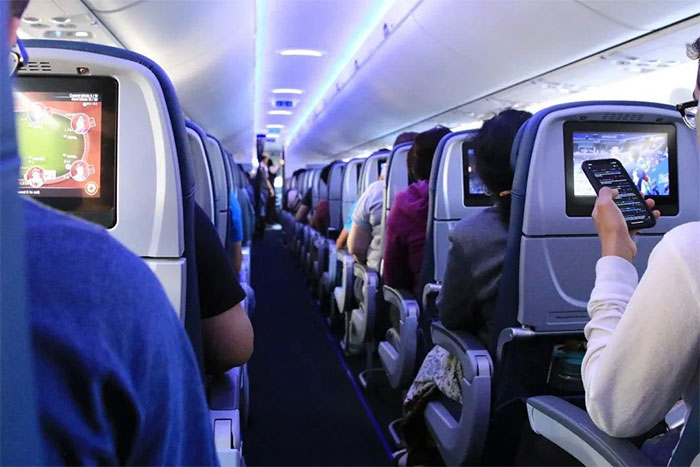
On airplanes equipped with Wi-Fi, passengers can surf the Internet, but the quality is often unstable.
Additionally, some experts have noted that it is unnecessary to synchronize the massive data of each aircraft in real-time.
The current civil aviation system can already track the speed, altitude, and other data of aircraft in real-time, and airplanes can also communicate important information to the ground via satellite phones. Therefore, if all detailed data from the aircraft, cockpit dialogues, and other information were synchronized in real-time, the amount of data would be overwhelming and would not aid management.
In reality, most aviation accidents typically occur during takeoff and landing, so the level of damage to the aircraft is relatively minor. In such cases, locating the black box to extract data is quite straightforward.
And even if the aircraft crashes and explodes, the black box will still be there.

The black box is usually located at the tail of the aircraft, where it is least damaged when an accident occurs.
Why is the black box not black?
Despite its name, the black box is usually bright orange and equipped with reflective strips so that search and rescue personnel can easily locate it. To ensure data safety, the aviation industry has detailed regulations regarding the installation location, power supply mode, shock resistance, and high-temperature tolerance of the black box.
The black box is typically installed at the tail of the aircraft, as statistics show this area is the least damaged after accidents. Its outer layer is wrapped in a thick stainless steel shell and insulation layer, allowing it to withstand the impact of forces up to 3,400 times the gravity of Earth, as well as extremely high temperatures and water pressure at depths of 6,000 meters, while still protecting the data from damage.
To make it easier to locate after falling into water, the black box is also equipped with reflective strips and an underwater locator beacon. The underwater locator beacon can continuously emit ultrasonic signals and operate for at least 30 days, facilitating search and rescue personnel in locating it underwater. However, in some cases, the locator beacon may malfunction due to the impact of the crash.
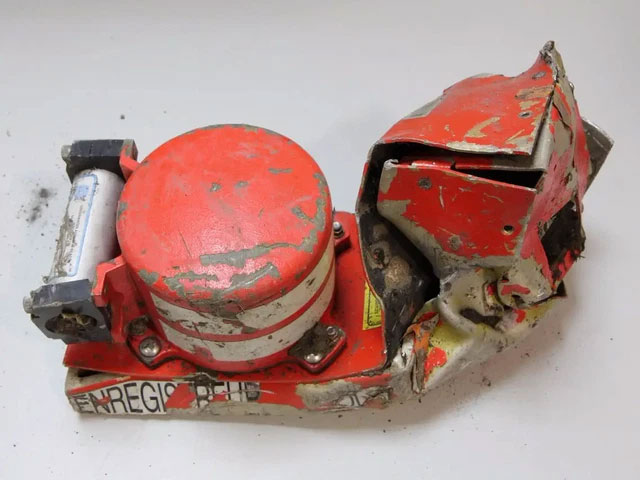
The black box is not always intact after an accident.
The Birth of the Black Box
The invention of the black box stemmed from a series of tragic accidents in the early days of civil aviation.
In 1949, a British airline introduced the world’s first commercial jet airliner, the De Havilland Comet. However, from 1952 to 1954, seven aircraft accidents occurred in succession, resulting in the deaths of 110 people.
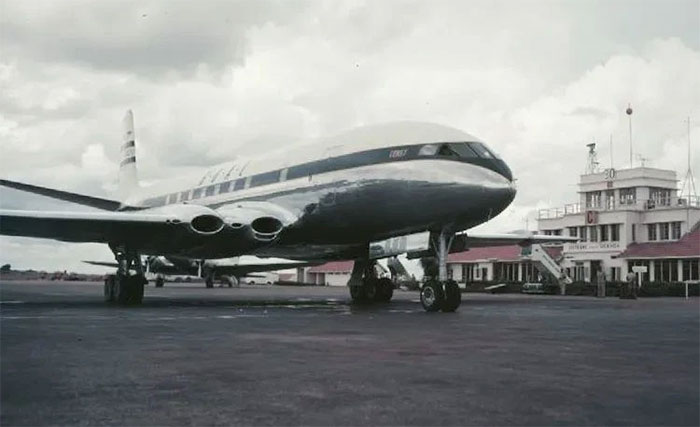
First generation De Havilland Comet, 1952
To investigate the causes of these accidents, the British Civil Aviation Authority assembled a team of experts in Australia (then still a British colony), including 28-year-old David Warren, a chemist researching aviation fuel. During the investigation, Warren faced a significant challenge: there was too little data to work with.
At that time, some military test aircraft were equipped with flight data recorders, but this equipment was not used in the civil aviation sector. Witnesses could sometimes provide crucial and irreplaceable information, but often there were very few survivors from plane crashes. To understand what pilots and passengers experienced in their final moments before an accident occurred, cockpit voice recorders were necessary. Thus, Warren combined the flight data recorder with a cockpit voice recorder and encased it in a sturdy shell, hoping that this way, it would provide valuable information for post-accident investigations.
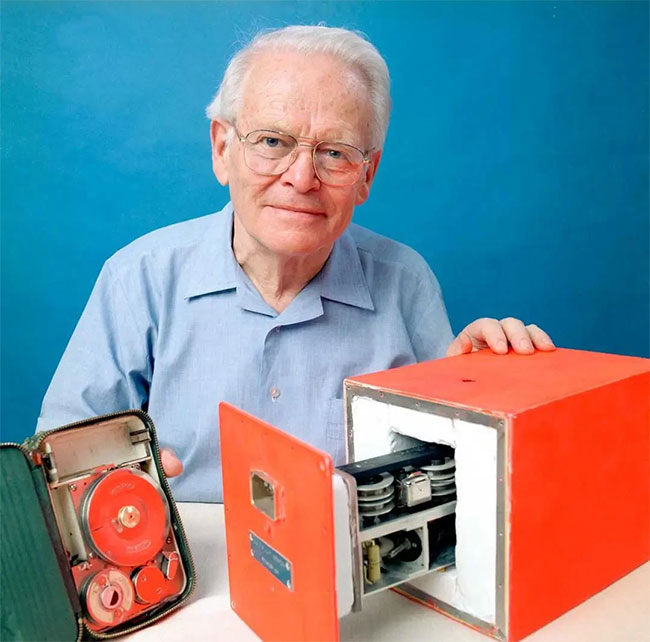
David Warren and the prototype of the first black box.
Initially, Warren’s superiors were not interested in this idea, so he spent weekends working on a prototype in his garage. However, over time, the value of the black box was recognized, and it gradually came into use. The modern black box largely retains Warren’s original design, although there have been some advanced technical upgrades.
With the help of the black box, the aviation industry has been able to learn from every accident, making air travel increasingly safer. However, the problem is that in some particularly severe aviation accidents, the black box cannot be found, such as in the case of Malaysia Airlines Flight MH370. It is hoped that advancements in technology can lead to further improvements in black box design, so that every accident can be resolved, preventing tragedies from ever repeating.


















































